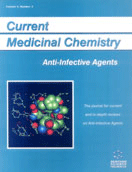Abstract
The ß-lactam antibiotics perhaps form the best studied and most used (in volume and sales) antibiotics in the world today. The extensive and in many cases, uncontrolled use of the ß-lactam antibiotics, particularly in developing countries and for veterinary uses, has resulted in the evolution of resistance in many strains of bacteria. One common mechanism of resistance with ß-lactam antibiotics is the expression of a specific class of enzymes - the ß-lactamases - by the bacteria. These enzymes interact with and destroy the antibiotic, before it can exert its desired effect. Many (up to now 340) distinct ß-lactamases have been isolated and identified so far and various methods of classifying them reported. The particular ß-lactamases produced is dependent on factors that include the nature of the strain of bacteria and the particular antibiotic used. Since over the years, the usage of the ß-lactam antibiotics has changed depending on the discovery of new and superior member s and on variations in usage in different countries, there has been a shifting pattern in the particular ß-lactamases produced over time. There is hence a continuing need to identify new ß-lactamases inhibitors which would be effective in combination with the newer antibiotics. This paper considers recent developments in identifying new classes and members of ß-lactamase inhibitors.
Keywords: lactam antibiotic, lactam inhibitor, lactamase, monobactam derivative
 7
7

